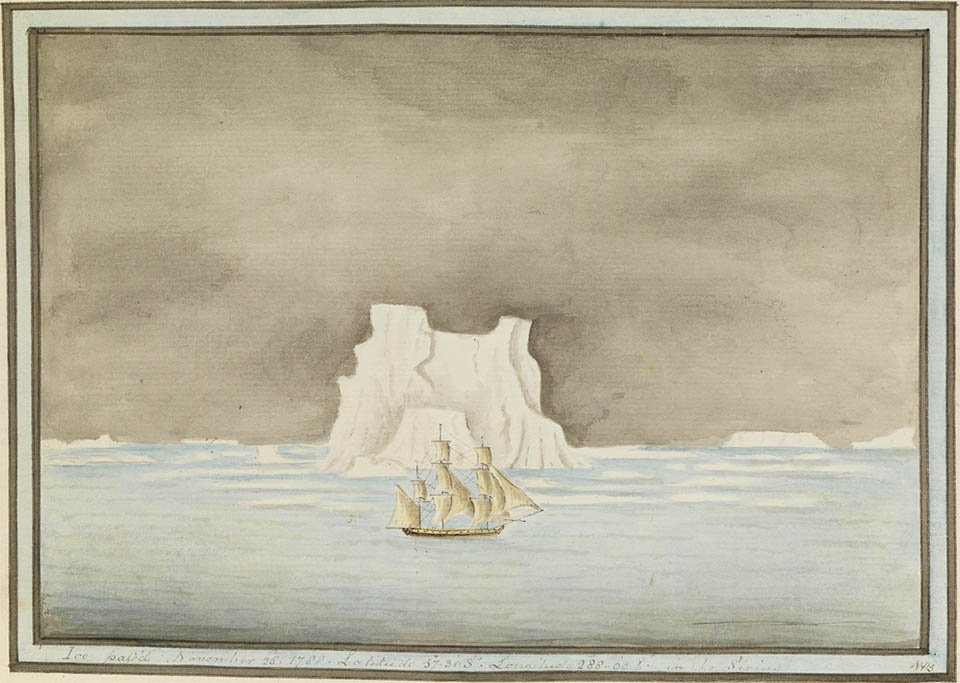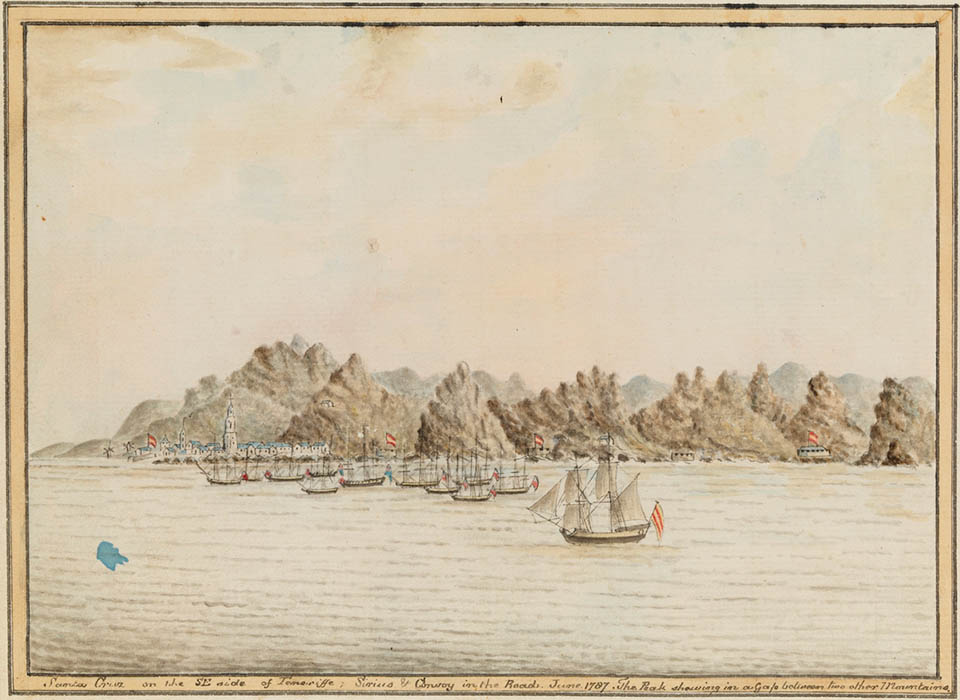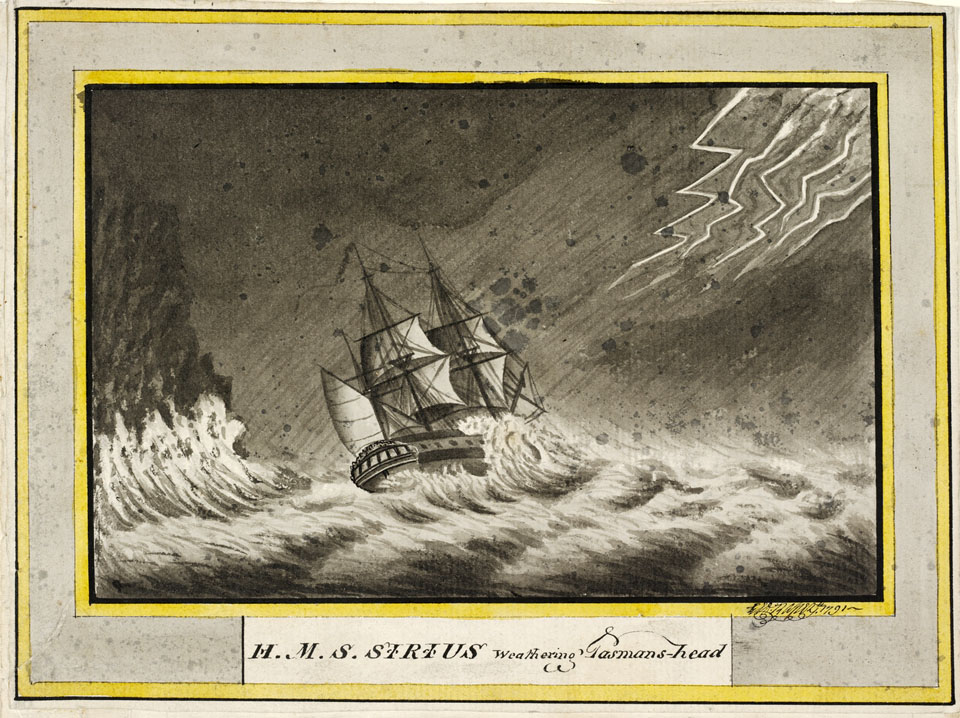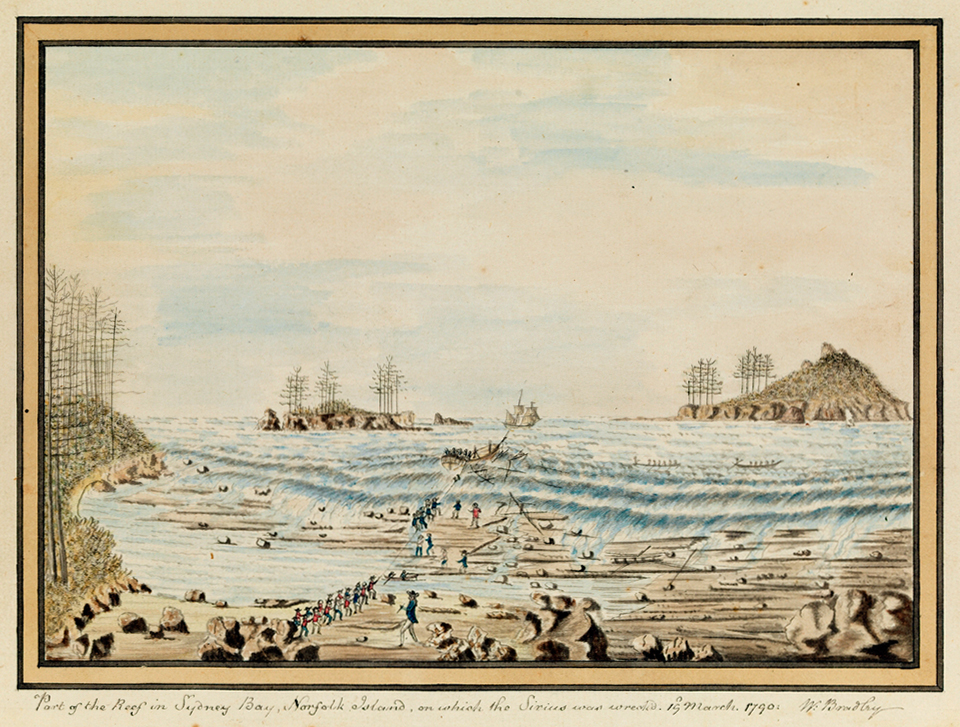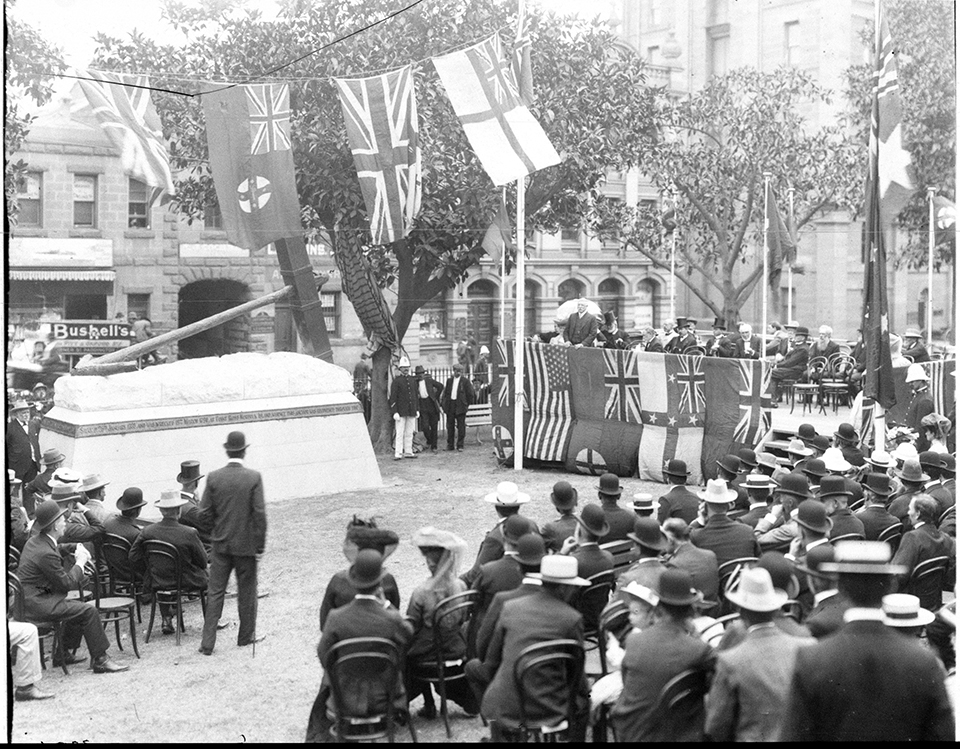The Dictionary of Sydney was archived in 2021.
HMS Sirius
Citation
Persistent URL for this entry
To cite this entry in text
To cite this entry in a Wikipedia footnote citation
To cite this entry as a Wikipedia External link
HMS Sirius
HMS Sirius [media]has passed into Australian history as the flagship of the First Fleet, which transported convicts and their guards from England to the new colony of Botany Bay in the late 1780s.
Built in 1780 as the Berwick for the East India trade, the ship was badly burnt in a fire and was bought and rebuilt by the Royal Navy in 1786, with a displacement of 540 tonnes and 20 guns. HMS Sirius – named after the brightest star in the night sky – was commissioned into the Royal Navy that same year, as the First Fleet flagship. For this expedition, the British government hired nine ships and two naval vessels which they provisioned with enough supplies to keep the expected 759 convicts, Marine guards (including any families) and some civil servants until they could survive on their own in the new colony.
The long voyage
The expedition left England on 12 May 1787. The Sirius was under the command of Captain John Hunter and carried Arthur Phillip, the governor of the colony.
It [media]was a slow and tedious trip by sea from England to the east coast of Australia. The fleet had to cross and re-cross the Atlantic Ocean, calling in first at Tenerife in the Canary Islands, but passing the Cape Verde Islands by, since high winds prevented any landing there. The fleet then sailed to Rio de Janeiro, arriving there on 6 August 1787 for restocking, and sailing back across the southern Atlantic Ocean to reach Cape Town in mid-October. There, supplies and livestock were added to the fleet's cargo.
After leaving Cape Town, in November 1787, Captain Phillip transferred from the Sirius to the swifter HMS Supply, which, with several other fast ships, formed an advance party for the expedition. The Sirius, under the command of Captain Hunter, remained with the bulk of the fleet.
In [media]early January 1788, the Sirius sighted the south coast of Van Diemen's Land (Tasmania) and passed the South West and South East capes. On 18 January 1788, HMS Supply arrived in Botany Bay, followed the next day by the three other fast transports of the advance group. At dawn on the following day, the Sirius was just south of Botany Bay, which it entered later that same morning.
Phillip [media]was soon aware that Botany Bay was not really suitable for the settlement, as it had no fresh water, and had no sheltered harbour for the ships. He went north to look for a better site for the colony, returning three days later with the news of a fine harbour that he named Port Jackson.
On 25 January, Phillip [media]left Botany Bay for Port Jackson aboard the Supply. The remainder of the First Fleet arrived in Port Jackson the next day. Phillip allocated Garden Island to HMS Sirius for use as a ship's garden. Among the crew of the Sirius were surgeon George Worgan, whose diaries provide a window into the early days of colonial life, and the 'young gentleman' seaman George Raper, whose watercolours and sketches recorded both the voyage out and the colonial setting.
The wreck of the Sirius
After [media]its arrival in Port Jackson, HMS Sirius remained as a supply ship and sailed to the Cape of Good Hope in October 1788 to obtain food for the starving colony, a voyage that took over seven months. After returning, it then sailed to Norfolk Island, where it was wrecked early in 1790. With the settlement still on the brink of starvation, this was a major catastrophe, as it left the colonists with only one ship and insufficient food.
The Sirius's crew [media]was stranded at Norfolk Island until February 1791 when Hunter and the officers and crew of the Sirius returned in the Supply to Port Jackson. They left for the Philippines on 28 March in the chartered Dutch ship Waaksamheyd . They finally reached Portsmouth on 23 April 1792, and a court martial was held over the loss of the Sirius; this was the third shipwreck in which Hunter had been involved. All were 'honorably acquitted' and paid off on 4 May.
Despite its [media]tragic demise, the HMS Sirius played a central role in the establishment of the first European settlement in Australia, after a voyage that had taken eight months and one week to complete. Its importance in Australian history has long been appreciated by historians and, more recently, maritime archaeologists working on the underwater remains of the vessel. The general location of the wreck was recorded by contemporary witnesses in both documentary accounts and drawings: however it was only after an initial survey of the underwater site by divers from the Western Australian Maritime Museum in 1983 that the archaeological potential of the wreck was confirmed. The [media]main Sirius wreck site is located seaward of the outer reef at Slaughter Bay: its retrieved anchor now sits in Macquarie Place park.
Focus on the wreck heightened during preparations for Australia's bicentennial celebrations in 1988 and there were expeditions to the Sirius wreck site in 1985, 1987, 1988 and 1990.
References
Migration Heritage Centre website, 'Objects through time … HMS Sirius Anchor and Cannon c1780–1790', http://www.migrationheritage.nsw.gov.au/exhibition/objectsthroughtime/anchor/ viewed 18 February 2009
National Library of Australia website, 'The George Raper collection', Timeline, http://www.nla.gov.au/exhibitions/georgeraper/timeline/timeline-doc-1788.html, viewed 18 February 2009
Nigel Erskine et al, 'HMS SIRIUS Expedition Report', Norfolk Island Museum, 2002, available at http://www.anmm.gov.au/webdata/resources/oaiFiles/2002_HMS_Sirius_Expedition_Report.pdf, viewed 19 February 2009



